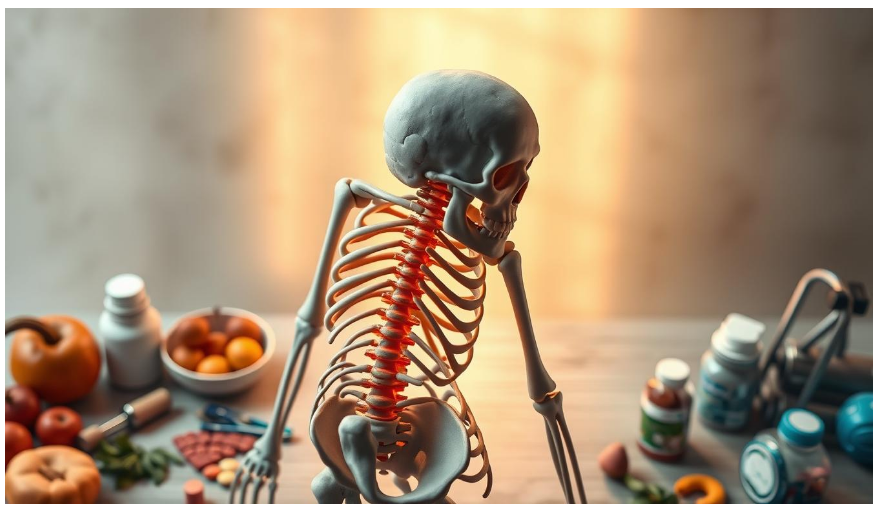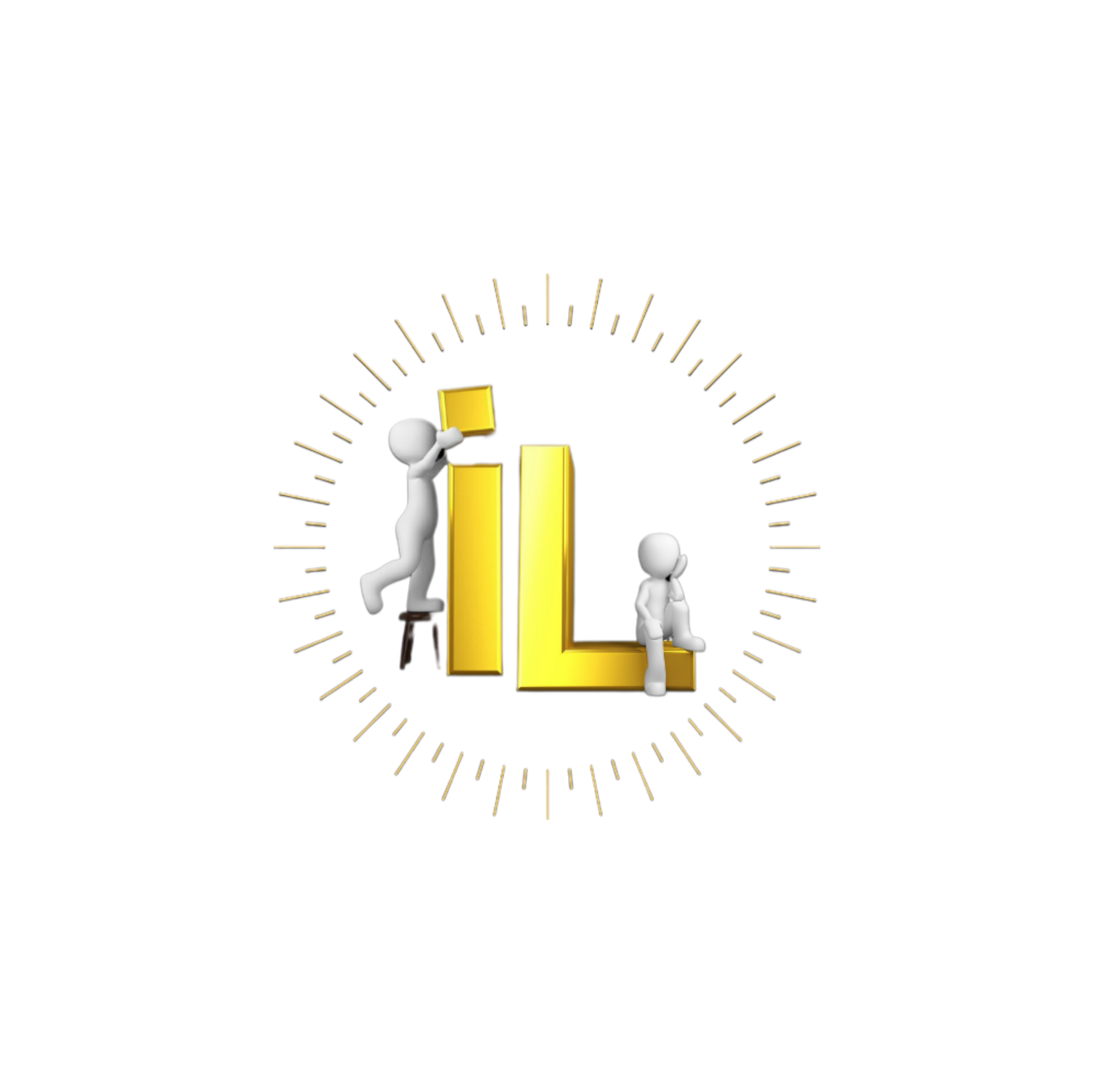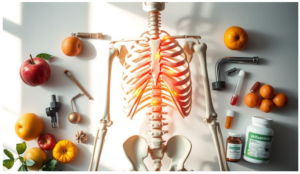Can you take control of your bone health and lower your risk of fractures? Osteoporosis, a condition where bones lose density and strength, affects over 10 million Americans. Women are four times more likely to get it than men. Knowing about osteoporosis, its causes, symptoms, and treatments is key to managing it and preventing bone loss.
As we get older, our bones naturally weaken, raising the risk of fractures in the hip, spine, and wrist. But, by focusing on bone health, we can lower our fracture risk. This includes regular bone density tests and a diet rich in calcium. In this article, we’ll delve into osteoporosis, covering its causes, symptoms, and treatments. We’ll also look at lifestyle changes that can help prevent it.
Key Takeaways
- Osteoporosis affects over 10 million Americans, with a significant impact on bone health and fracture risk.
- Women are four times more likely to develop osteoporosis compared to men, particularly after the age of 50.
- Proper calcium intake and maintaining good bone health can help reduce fracture risk.
- Bone density tests are recommended for all women aged 65 and older and all men aged 70 and older.
- Treatment options for osteoporosis include medications such as bisphosphonates and denosumab, as well as lifestyle changes.
- Regular exercise and a balanced diet can help prevent osteoporosis and reduce fracture risk.
- Being aware of the risks associated with osteoporosis and taking proactive steps can help individuals maintain strong bones and reduce their fracture risk.

Understanding Osteoporosis: A Comprehensive Overview
Osteoporosis is a condition that makes bones weak and fragile. It affects millions of people worldwide. Symptoms include fractures and pain. Knowing what happens to bones in osteoporosis is crucial.
Recent data shows that nearly everyone loses bone as they age. Men and women lose 1 to 3% of bone mass each year, starting at 50. This makes bone health supplements and lifestyle changes for bone health very important.
- Over half of all individuals aged 50 years and older in the United States are affected by osteoporosis and osteopenia.
- The average calcium intake for people aged 50 years or older is half of the recommended 1,200 milligrams per day.
- Vitamin D deficiency is common, especially with aging.
While osteoporosis treatment options exist, prevention is more important. By making lifestyle changes for bone health and using bone health supplements, people can lower their risk of osteoporosis and its symptoms.
Early Warning Signs and Symptoms
Osteoporosis often has no symptoms until a bone breaks. But, signs like back pain or losing height can hint at it. Spotting these signs early is key to osteoporosis prevention and avoiding fractures.
Eating well, with lots of calcium and vitamin D, can lower osteoporosis risk. Important steps for osteoporosis prevention include:
- Keeping a healthy weight to avoid brittle bones
- Not drinking too much alcohol or smoking, as they harm bones
- Doing regular exercises that make bones stronger to lower fracture risk
Knowing these early signs and taking steps to prevent them can lower the chance of osteoporosis and fractures. A balanced diet and exercise keep bones strong and fight osteoporosis.
| Factor | Risk of Osteoporosis |
|---|---|
| Low Body Mass Index (BMI) | Higher risk |
| Insufficient dietary intake of calcium and vitamin D | Higher risk |
| Tobacco use | Higher risk |
Risk Factors for Developing Osteoporosis
Osteoporosis is a complex condition with many risk factors. Knowing these factors helps prevent and manage osteoporosis. Age is a big factor, especially for women a year or two before menopause. Family history also matters, as it can increase your risk.
Lifestyle choices can also raise your risk. Being inactive, smoking, and drinking too much alcohol are examples. A diet lacking calcium and vitamin D is another risk. Certain medical conditions, like thyroid disorders or rheumatoid arthritis, also increase your risk. But, exercises like weight-bearing activities can help lower these risks.
Knowing these risks is key to preventing osteoporosis. Engaging in exercises and living a healthy lifestyle are important steps. Early diagnosis and treatment are also crucial. By understanding and addressing these factors, you can lower your risk of osteoporosis and keep your bones strong.
Some key risk factors for osteoporosis include:
- Genetic and family history
- Lifestyle-related risks, such as physical inactivity and smoking
- Medical conditions, such as thyroid disorders or rheumatoid arthritis
- A diet low in calcium and vitamin D
Being aware of these risks and taking steps to reduce them can help. Regular exercise, a balanced diet, and early diagnosis are key. They help keep your bones strong and prevent osteoporosis.
Diagnosis Methods and Bone Density Testing
Diagnosing osteoporosis involves physical exams, medical history, and bone density tests. Bone density testing is key to finding those with low bone mass and at risk of fractures. The U.S. Preventive Services Task Force suggests screening women over 65 and those at higher risk.
The dual-energy x-ray absorptiometry (DXA) test is the main way to measure bone mineral density (BMD). It can spot osteoporosis, low bone density, and predict fracture risks. It also helps track treatment options. Knowing about these tests helps people manage their bone health and follow osteoporosis prevention tips.
Some important facts about bone density tests are:
- Bone density tests usually check the spine, hip, and sometimes the forearm.
- A T-score of -1 and above means normal bone density. A T-score between -1 and -2.5 shows osteopenia. A T-score of -2.5 and below means osteoporosis.
- The accuracy of bone density tests varies. Devices for spine and hip are more precise but cost more than peripheral devices.
By taking charge of their bone health, people can lower their fracture risk. They can use prevention tips and treatment options to manage osteoporosis.

The Role of Nutrition in Bone Health
Nutrition is key to keeping bones strong and preventing osteoporosis. Eating a balanced diet with calcium and vitamin D is crucial. Adults need different amounts of calcium based on age and sex.
Calcium supplements can help prevent osteoporosis, especially for those lacking calcium. It’s also important to eat well and exercise regularly. Aim for 1,000-1,200 mg of calcium and 600-800 IU of vitamin D daily.
Protein is also vital for bone health. Women need 46 g/day and men need 56 g/day of protein. A diet full of protein, calcium, and vitamin D helps prevent muscle loss and reduces fall risks.
Essential Nutrients for Strong Bones
- Calcium: essential for building and maintaining bone mass
- Vitamin D: crucial for calcium absorption and bone health
- Protein: necessary for muscle health and bone density
Understanding nutrition’s role in bone health is important. Following these tips helps individuals manage their bone health and lower osteoporosis risk.
Exercise and Physical Activity Guidelines
Regular exercise, like strength training and weight-bearing activities, helps keep bones strong. The American College of Sports Medicine (ACSM) says healthy adults should do weight-bearing aerobic exercises 3 to 5 days a week. They should also do resistance exercises at moderate to high intensity.
This helps improve muscle strength and lowers the risk of fractures. It also reduces pain for those with osteoporosis.
Vitamin D is also key for strong bones. It’s important for older adults to keep their vitamin D levels up. This can help prevent falls and fractures.
A good exercise plan, along with a balanced diet and enough vitamin D, can greatly improve life for those with osteoporosis.
- Weight-bearing aerobic activities, such as walking or jogging
- Resistance exercises, such as strength training
- Balance exercises, such as tai chi
Before starting any exercise, it’s crucial to talk to a healthcare provider, especially if you have osteoporosis. They can make an exercise plan that fits your needs and health.
Medical Treatments and Medications
Osteoporosis treatment combines lifestyle changes and medical treatments. Medications like bisphosphonates slow bone loss and lower fracture risk. Hormone therapy, like estrogen replacement, also helps prevent osteoporosis.
Some common osteoporosis medications include:
- Alendronate (weekly)
- Risedronate (weekly or monthly)
- Ibandronate (monthly or quarterly IV)
- Zoledronic acid (annual IV infusion)
These drugs can lower fracture risk and slow bone loss. But, it’s key to talk to a doctor about the risks and benefits. This helps find the best treatment plan.
Lifestyle changes are also vital for managing osteoporosis. This includes exercises that strengthen bones and a diet rich in calcium and vitamin D. Preventing osteoporosis is also important. People can lower their risk by living a healthy lifestyle and getting bone density tests.
Working with a healthcare provider is crucial. They help create a treatment plan that includes both medical treatments and lifestyle changes. This approach helps prevent fractures and keeps bones strong.
| Medication | Administration | Benefits |
|---|---|---|
| Alendronate | Weekly | Reduces risk of fractures, slows bone loss |
| Risedronate | Weekly or monthly | Reduces risk of fractures, slows bone loss |
| Ibandronate | Monthly or quarterly IV | Reduces risk of fractures, slows bone loss |
Preventing Falls and Fractures
It’s key to prevent falls and fractures for those with osteoporosis. Knowing the symptoms, like brittle bones, and risks, like falls, helps make a safe home. This can lower the chance of injuries from osteoporosis.
More than 25% of people over 65 fall each year. Falls are a big reason for long-term disability in older adults. To lower risks, make your home safer by removing hazards and installing handrails. Also, try balance exercises like tai chi or yoga to prevent falls.
Regular exercise, especially weight-bearing activities, helps slow bone loss and boosts muscle strength. This reduces the chance of falls. Older adults should do at least 150 minutes of physical activity weekly to keep bones strong and prevent falls. By understanding the importance of preventing falls and fractures, you can make your living space safer and lower your osteoporosis risks.
- Implementing home safety modifications, such as removing tripping hazards and installing handrails
- Engaging in balance training exercises, like tai chi or yoga
- Regular exercise, particularly weight-bearing activities, to slow bone loss from osteoporosis and improve muscle strength
- Maintaining a healthy diet with adequate calcium and vitamin D to support bone health
By using these strategies and knowing about osteoporosis symptoms and diagnosis, you can lower your risks. This helps prevent falls and fractures.

| Strategy | Benefits |
|---|---|
| Home safety modifications | Reduces tripping hazards and fall risk |
| Balance training exercises | Improves balance and reduces fall risk |
| Regular exercise | Slows bone loss from osteoporosis and improves muscle strength |
Living Well with Osteoporosis
Managing osteoporosis means living a healthy lifestyle. This includes a diet full of vitamin D and calcium, and regular exercise. Osteoporosis prevention is key to avoiding fractures and other problems.
Exercise, especially weight-bearing, strengthens bones and muscles. This lowers the chance of falling. The Centers for Disease Control and Prevention say over 3 million older people went to emergency rooms in 2020 for falls. Quitting smoking and exercising can greatly reduce the risk of brittle bones and fractures.
Here are some tips for living well with osteoporosis:
- Maintaining a healthy weight
- Exercising regularly, including weight-bearing exercises
- Getting enough vitamin D and calcium
- Quitting smoking and reducing alcohol consumption
Understanding how to live well with osteoporosis is crucial. It helps control the condition and lowers the risk of fractures and other issues. With the right steps, people with osteoporosis can stay active and healthy, reducing the risk of brittle bones and improving their overall health.
Conclusion: Taking Control of Your Bone Health
We’ve learned a lot about osteoporosis and how to fight it. This condition can be tough, but you can take steps to keep your bones strong. This helps lower the chance of breaking bones.
Knowing what causes osteoporosis and spotting early signs are key. Using proven ways to live healthier and treating it right can help a lot. Eating well, exercising, and getting bone tests are important steps.
Remember, you’re not fighting this alone. Talk to doctors, join groups, and learn about new ways to fight osteoporosis. With everyone’s help, we can make sure everyone has strong bones for a happy, active life.
FAQ
What is osteoporosis?
Osteoporosis is a condition where bones lose density and strength. This makes bones more likely to break.
Who is most affected by osteoporosis?
Women after menopause and older adults are at higher risk. This is due to hormonal changes and bone loss with age.
What are the early warning signs and symptoms of osteoporosis?
Signs include back pain, losing height, and a curved posture.
What are the risk factors for developing osteoporosis?
Risk factors include family history, not being active, smoking, drinking too much alcohol, and some medical conditions.
How is osteoporosis diagnosed?
Doctors use physical exams, medical history, and bone density tests like DXA to diagnose osteoporosis.
What role does nutrition play in bone health?
Eating a diet rich in calcium and vitamin D is key for strong bones. Supplements can help if you’re not getting enough.
How can exercise and physical activity help with osteoporosis?
Exercise, like strength training and activities that make you stand up, helps keep bones strong. It also improves balance and reduces fall risk.
What are the medical treatments and medications for osteoporosis?
Medications like bisphosphonates and hormone therapy slow bone loss and lower fracture risk. Acupuncture and massage may also help.
How can I prevent falls and fractures with osteoporosis?
Make your home safer by removing hazards and installing handrails. Doing exercises to improve balance can also help prevent falls.
What does living well with osteoporosis involve?
It means living a healthy lifestyle, managing your condition with diet and exercise, and following your medication plan.
Source Links
- https://www.upmc.com/services/endocrinology/conditions/osteoporosis
- https://www.hopkinsmedicine.org/health/conditions-and-diseases/osteoporosis
- https://www.mayoclinic.org/diseases-conditions/osteoporosis/symptoms-causes/syc-20351968
- https://pmc.ncbi.nlm.nih.gov/articles/PMC5335887/
- https://pmc.ncbi.nlm.nih.gov/articles/PMC6225907/
- https://www.aarp.org/health/conditions-treatments/info-2022/symptoms-of-osteoporosis.html
- https://arthritisjax.com/blog/early-warning-signs-of-osteoporosis/
- https://www.niams.nih.gov/health-topics/osteoporosis
- https://health.ucsd.edu/care/endocrinology-diabetes/osteoporosis/risk-factors/
- https://www.niams.nih.gov/health-topics/osteoporosis/diagnosis-treatment-and-steps-to-take
- https://www.mayoclinic.org/tests-procedures/bone-density-test/about/pac-20385273
- https://www.osteoporosis.foundation/health-professionals/prevention/nutrition
- https://pmc.ncbi.nlm.nih.gov/articles/PMC7400143/
- https://www.mayoclinic.org/diseases-conditions/osteoporosis/in-depth/osteoporosis/art-20044989
- https://pmc.ncbi.nlm.nih.gov/articles/PMC10345999/
- https://theros.org.uk/information-and-support/osteoporosis/living-with-osteoporosis/exercise-and-physical-activity-for-osteoporosis/
- https://www.mayoclinic.org/diseases-conditions/osteoporosis/in-depth/osteoporosis-treatment/art-20046869
- https://www.mayoclinic.org/diseases-conditions/osteoporosis/diagnosis-treatment/drc-20351974
- https://pmc.ncbi.nlm.nih.gov/articles/PMC5768298/
- https://www.nia.nih.gov/health/falls-and-falls-prevention/falls-and-fractures-older-adults-causes-and-prevention
- https://www.osteoporosis.foundation/health-professionals/fragility-fractures/falls-prevention
- https://www.bonehealthandosteoporosis.org/patients/treatment/exercisesafe-movement/preventing-falls/
- https://www.medicalnewstoday.com/articles/living-with-osteoporosis
- https://www.mountainstar.com/healthy-living/blog/living-well-with-osteoporosis-in-the-spine
- https://medicine.yale.edu/news-article/draw-an-informed-conclusion-preventing-osteoporosis/
- https://www.niams.nih.gov/health-topics/surgeon-generals-report-bone-health-and-osteoporosis-what-it-means-you
- https://orthoinfo.aaos.org/en/staying-healthy/exercise-and-bone-health
Click here to learn more about this topic in a related article.





